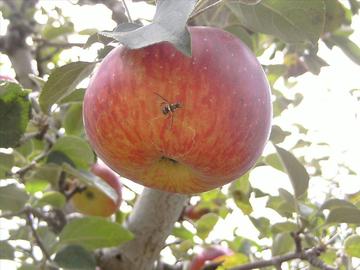Monitoring
In deciduous orchards place traps out when leaves begin to appear as fruit flies over winter as adults and will fly into the crop as the weather begins to warm and there is some leaf cover for them. In citrus orchards it is advisable to use traps all year.
Monitoring provides an indication on fruit fly activity, traps need to be checked weekly and fly numbers recorded. Use at least 5 traps per hectare or spaced at 300 meters around the orchard border with 2-3 traps on the inside of the crop use the para-pherome cuelure wafer.
Baiting
A tried and tested method for fruit fly management where a protein bait and an approved insecticide is diluted with water and either spot sprayed or band sprayed on the trees. This procedure should be conducted at least weekly, commencing when fruit flies are first monitored and continued at least two weeks post-harvest or until monitoring traps indicate no presence of flies. Repeat baiting following rainfall or monitoring indicates a build-up of flies. The addition of a thickening agent will improve the life of the bait. Some baits and insecticide combinations may cause fruit spotting, check before you apply.
Gel Lures
These lures have proven to attract both male and female flies and are used within a trap containing a cube of DDVP (Dichlorvos). This trap and lure combination can be used as “Border Protection” where traps are placed at 15 meter spacing around the perimeter of the orchard or as “Mass Trapping”. With border protection it is advisable support this by bait spraying within the crop.
Mass trapping is a system where 50 – 80 traps per hectare are used as a stand alone
system, traps should be concentrated around the borders. With either system it is important to hang traps early at least 6-8 weeks prior fruit ripening.
Orchard Hygiene
Orchard hygiene is an important part in Qfly management.
Make sure you:
• Remove unwanted fruit trees from around sheds, houses and along the boundary.
• Control the Qfly in all host plants
• Remove all late hanging fruit missed during harvest
• Pick up or destroy fallen fruit
• Restrict fruit entry into the orchard from outside sources

